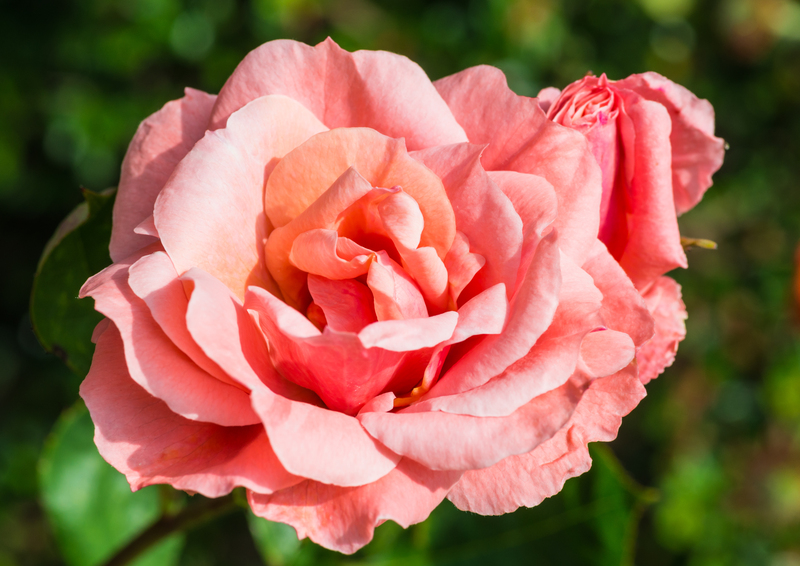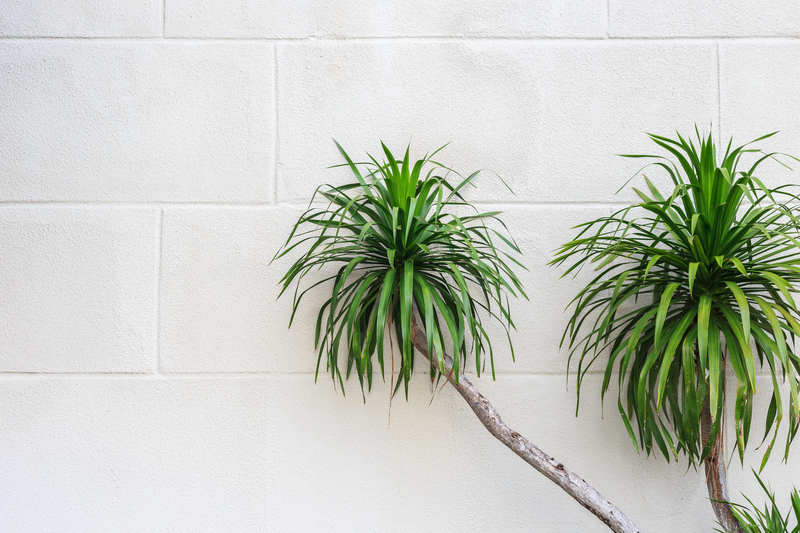Methods to Keep Your Garden Plants Warm Through Winter
Posted on 04/09/2025
Effective Methods to Keep Your Garden Plants Warm Through Winter
As winter approaches, every gardener faces the challenging task of protecting garden plants from the cold. Cold weather, frost, and biting winds can wreak havoc on your beloved blooms, veggies, and shrubs. Luckily, there are a variety of methods to keep your garden plants warm through winter that not only help plants survive but also thrive when spring returns.
This comprehensive guide will walk you through innovative techniques, practical tips, and essential products to ensure your garden's health during the winter months. Let's explore the most effective ways to shield your plants from winter's chill.

Why is Winter Protection Important for Garden Plants?
Garden plants, especially those not native to your climate zone, are vulnerable to cold stress, frostbite, and root damage during winter. Extreme temperature drops can:
- Damage or kill tender shoots and roots
- Interrupt essential metabolic processes
- Leave plants susceptible to diseases
- Reduce blooming potential for the next season
Therefore, understanding the best methods to keep your garden plants warm in winter is essential for any dedicated gardener.
Key Strategies to Insulate and Warm Garden Plants During Winter
1. Mulching: Nature's Own Insulation
Mulching is one of the easiest and most cost-effective ways to protect your garden plants from winter cold. A thick layer of mulch acts as an insulator, reducing temperature fluctuations and conserving soil moisture.
-
How to Use Mulch for Winter Protection:
- Apply a 2-4 inch layer of organic mulch (such as straw, leaves, wood chips, or bark) around the base of your plants.
- Keep the mulch a few inches away from the stems to prevent rot.
- Refresh your mulch layer in late autumn for best results.
Tip: For extra chilly areas, add an underlayer of compost to provide plants with nutrients and support root growth.
2. Cloches and Plant Covers: Creating Microclimates
Cloches, mini greenhouses, and frost blankets are exceptional for protecting garden plants from the cold by trapping heat and moisture around the plant.
-
Types of Plant Covers:
- Glass or Plastic Cloches: Individual domes placed over small plants or seedlings.
- Row Covers: Lightweight fabric draped over rows of crops, secured with stakes.
- Fleece & Frost Cloths: Specifically designed to shield sensitive plants from nighttime frosts.
Ensure covers don't touch plant foliage directly during freezes, as frozen fabric can transmit cold and damage leaves.
3. Cold Frames and Mini Greenhouses
A cold frame is a low, transparent-roofed enclosure that sits directly on the ground over garden beds. Cold frames and mini greenhouses maintain warmer temperatures by harnessing sunlight while blocking harsh winds and frost.
-
Advantages of Cold Frames:
- Protect delicate or young plants.
- Extend the growing season for hardy vegetables.
- Easy to build with recycled windows or clear plastic sheets.
Pro Tip: Open the lid on sunny days to prevent overheating and close it before sunset to trap warmth.
4. Windbreaks: Defending Against Winter Winds
Winter winds can be just as damaging as freezing temperatures, rapidly drying out soil and plant tissues.
-
How to Create Windbreaks:
- Install temporary garden fences made of burlap, wood, or plastic mesh around exposed beds.
- Plant evergreen shrubs or hedges to act as permanent wind barriers for your garden.
Windbreaks are especially important for plants that are prone to winter desiccation, such as evergreens and newly planted trees.
5. Watering Wisely Before Frost
Did you know that properly watered soil retains more heat? Moist soil has higher heat capacity, helping roots stay warmer on cold nights.
-
Winter Watering Tips:
- Water your garden during the day before a predicted frost (unless a freeze is imminent).
- Avoid overwatering as standing water can freeze and harm roots.
Note: Reduce watering frequency during winter, but don't allow plants to dry out completely.
6. Bringing Potted Plants Indoors
Potted and container plants are more susceptible to freezing as the soil mass is smaller and above ground. One reliable way to keep plants warm in winter is to bring them inside.
-
How to Move Plants Indoors:
- Acclimate plants gradually by moving them to a sheltered location beforehand.
- Check for pests and diseases before bringing them inside.
- Place them in a cool, bright spot away from heating vents.
If indoor space is limited, group potted plants closely together for mutual warmth or wrap the pots in insulating materials such as bubble wrap or burlap.
7. Using Heat Lamps and Soil Heating Cables
For prized tropicals, seedlings, or in greenhouses, adding gentle artificial warmth can make all the difference. Electric heat lamps and soil cables provide continuous warmth during extreme cold spells.
-
Tips for Using Garden Heaters:
- Use outdoor-safe, weatherproof heaters and install according to manufacturer instructions.
- Place heat sources several inches above plants to avoid overheating.
- Combine with thermal insulation for best results.
Safety Tip: Always monitor electrical equipment for malfunctions and keep away from combustible materials.
8. Insulating Garden Beds with Raised Beds and Covers
Raised beds naturally drain better and warm up faster than in-ground beds, making them an excellent choice for winter gardening. Adding covers or hoops over raised beds creates protected micro-environments.
-
How to Insulate Raised Beds:
- Line the bed walls with foam boards or straw bales.
- Apply row covers or low tunnels made of plastic or garden fleece.
This combined approach gives your garden plants a double layer of winter defense.
Winter Care for Sensitive and Exotic Plants
Some plants, especially exotics or subtropicals like citrus, olives, or hibiscus, require a specialized approach to protection. Here are a few targeted plant warming methods for winter:
- Wrap trunks with burlap or bubble wrap to insulate against frost cracks (great for young trees).
- Add extra mulch to the crown area for perennials that overwinter in the ground.
- Use thermal blankets or horticultural fleece for overnight protection of tender shrubs.
If in doubt, research your plant's hardiness level and err on the side of extra protection!
Common Mistakes to Avoid
Overdone, poorly-planned protection can sometimes do more harm than good. Avoid these winter care blunders:
- Wrapping plants too tightly or using non-breathable plastics, which can trap moisture and encourage rot or fungus.
- Forgetting to remove covers on sunny days, causing overheating.
- Neglecting proper air circulation, especially for evergreens and roses.
- Ignoring late-season watering needs, which can stress plants further.
Choosing the Right Protection for Your Climate Zone
Not all winter plant protection methods are created equal. Your climate, hardiness zone, and plant selection should guide your strategy.
- Mild Winters: Mulching and row covers may be sufficient.
- Moderate Winters: Cloches, windbreaks, and fleece are helpful additions.
- Severe Winters: Consider full cold frames, heated greenhouses, or bringing delicate plants inside.
Always check the USDA Hardiness Zone Map or your local extension office for guidance.

Frequently Asked Questions about Warming Garden Plants in Winter
Q1: When should I start winter protection for my garden?
A: Begin preparations in late fall, before the first serious frost. Monitor the weather and apply coverings or mulch during the first dry period of autumn.
Q2: Can all plants survive outdoors in the winter?
A: Cold-hardy perennials, shrubs, and trees usually handle winter well. Tender annuals, exotics, and tropicals need additional insulation or indoor relocation.
Q3: How thick should mulch layers be for winter protection?
A: 2 to 4 inches is typically ideal, but in exceptionally cold climates, up to 6 inches is safe for most perennials.
Q4: Is it bad to cover plants with plastic sheets?
A: Clear plastic can be used for temporary covers, but never directly on foliage. Always provide air circulation to prevent overheating and moisture buildup.
Conclusion: Smart Strategies for Keeping Your Garden Warm This Winter
With the right methods to keep your garden plants warm through winter, you can enjoy a thriving and vibrant landscape--no matter how cold it gets outside. From building DIY cold frames and mulching heavily to setting up windbreaks and bringing sensitive plants indoors, there are countless ways to guard your garden against winter's worst.
Plan ahead, observe your plants' needs, and combine strategies for the best winter garden protection. When spring comes, your healthy, robust plants will be glad you did!
- Mulch generously to insulate roots and retain soil warmth.
- Use plant covers, cloches, and row covers for above-ground protection.
- Shield against wind with fences or hedge rows.
- Utilize cold frames, greenhouses, or move containers indoors for delicate plants.
- Monitor watering and provide gentle heat when necessary.
Stay warm, and happy gardening--no matter the season!

